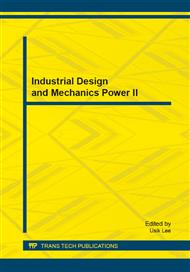p.3
p.8
p.13
p.18
p.22
p.27
p.32
p.36
A Prediction Method for Dynamic Performance of Machine Tool Joint Surfaces
Abstract:
The method for dynamic modeling of joint surfaces is proposed to predict dynamic performance of machine tool accurately by virtual material layer elements in this paper. For this process, the numerical relations of contact stiffness and virtual material layer parameters are obtained by finite element theory, and the finite element model is founded by virtual material layer elements and multiple point constrain technique (MPC). Modal analysis of a simple model under different contact stiffness is carried out. It has shown the relative errors between theoretical natural frequencies and simulated ones of this model are less than 2%.
Info:
Periodical:
Pages:
8-12
Citation:
Online since:
October 2013
Authors:
Price:
Сopyright:
© 2013 Trans Tech Publications Ltd. All Rights Reserved
Share:
Citation:


